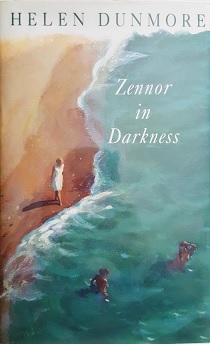I first became aware of smart one-liners as a child, watching film classics on television, many of them film noir movies from the 1940s and 1950s, starring such actors as Robert Mitchum, Humphrey Bogart, Gloria Graham, Rita Hayworth and Dick Powell.
Hardboiled novels by Raymond Chandler, Dashiell Hammett and James M. Cain were turned into films. More recently, Walter Mosley, Sara Paretsky, Sue Grafton, Robert B. Parker and Mickey Spillane have continued the fiction noir genre of solitary, wisecracking private investigators. Their work has also provided a rich resource for film scripts. Mickey Spillane actually played his signature detective character Mike Hammer in one film.
It’s always a tricky problem, for a writer to decide how much detail to use for their protagonist’s looks and behaviour, but these authors have a knack for summing things up in amusing and observant quips. In Farewell My Lovely featuring Raymond Chandler’s hard-drinking private eye Philip Marlowe, a client called Lindsay Marriott asks the detective to accompany him on a rendezvous but won’t say why. Marlowe suggests, “You just want me to go along and hold your hat?” which annoys Marriott:
“I’m afraid I don’t like your manner,” he said, using the edge of his voice.
“I’ve had complaints about it,“ I said. “But nothing seems to do any good.”
In Key Largo, a film adaptation of a stage play, Humphrey Bogart observes: “When your head says one thing and your whole life says another, your head always loses.”
In a 1956 film The Killing, which was based on a novel, a veteran criminal planning one last big heist, dismisses his wife with, “You like money. You’ve got a great big dollar sign there where most women have a heart.”
It’s not just noir movies and pulp fiction that contain brilliant one-liners. In Gone With The Wind, Rhett Butler is giving Scarlett O’Hara an admiring glance:
Scarlett: “Cathleen, Who’s that?”
Cathleen Calvert: “Who?”
Scarlett: “That man looking at us and smiling. The nasty, dark one.”
Cathleen Calvert: “My dear, don’t you know? That’s Rhett Butler. He’s from Charleston. He has the most terrible reputation.”
Scarlett: “He looks as if…as if he knows what I look like without my shimmy.”
I love the last line, which is telling of Rhett’s lasciviousness, as well as revealing Scarlett’s self-awareness of her sexual allure, that she’s used to manipulate puppy dog male admirers, but which is about to be tested properly for the first time by a real hound of a man.
In my own writing, I tend to approach character description in a roundabout and subtle way, not giving overt and detailed descriptions of someone’s height, hair colour, weight, complexion, etc, as soon as they make their first appearance. I try to use witty observations by my protagonist detective as a shorthand way of saying what someone looks like, as well as providing humour and an insight into his character.
To tighten my descriptive writing, I’ve been reading Mickey Spillane and Walter Mosley, who are masterful at snappy dialogue. Take this description from Spillane’s The Big Kiss which reads like an astringent daisy chain of one-liners, ‘It was one of those nights when the sky came down and wrapped itself around the world. The rain clawed at the windows of the bar like an angry cat and tried to sneak in every time some drunk lurched in the door. The place reeked of stale beer and soggy men with enough cheap perfume thrown in to make you sick.’
Walter Mosley, in Debbie Doesn’t Do It Anymore, has his protagonist, a black porn queen observe: “Love makes you blind to your own survival. And if it doesn’t then it’s not love at all.”
From my own Cornish Detective novels:
Of a greedy massage parlour owner: ‘Caradoc kept quiet, his cheeks pouching as he thrust an underslung jaw forward like the drawer of a cash register.’
Of the massage parlour owner’s henchman: ‘Men as heavily scarred as him carried a warning notice that they’d survived their wounds, and were capable of inflicting similar damage. He radiated malevolence. Fuck with me, and I’ll fuck with you.’
Of a shifty police informer: ‘His skinny acned appearance proved it. He’d given a home to a moustache which looked about to continue its wandering at any moment.’
Of an elderly, unflappable barmaid: ‘Karla was a university student in her final year, who helped out in the vacations, while Doreen was three times older, a veteran barmaid who’d seen it all and done quite a lot of it as well.’
Whatever you call them—wisecracks, witticisms, quips, one-liners—such stylistic flourishes help to make a writer’s voice.
Do you use them? Examples, please.
Do they get on your nerves or do you like them?
Do you have any favourites from famous books?




![[IMG]](https://recklesseyes.files.wordpress.com/2011/09/mad-writer.jpg?resize=474%2C443)








